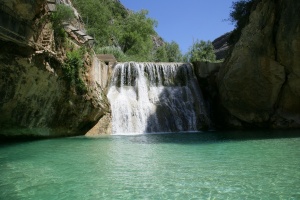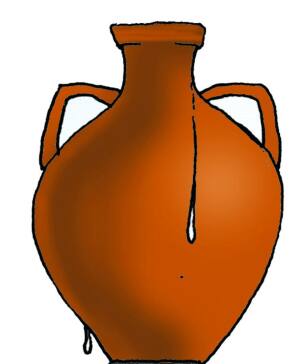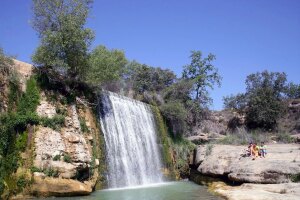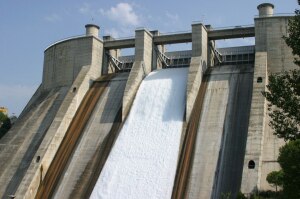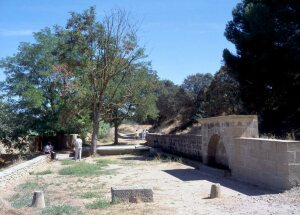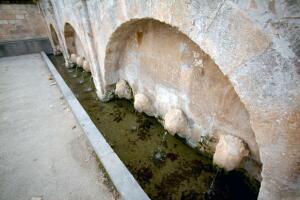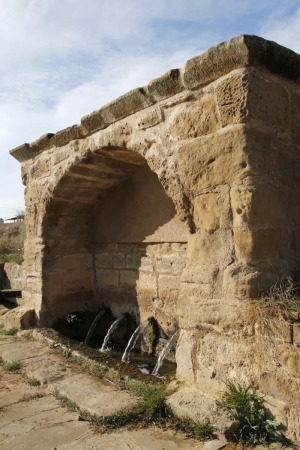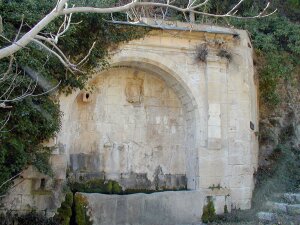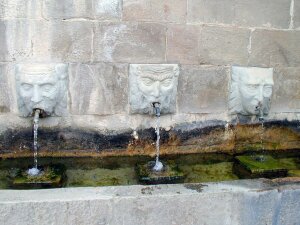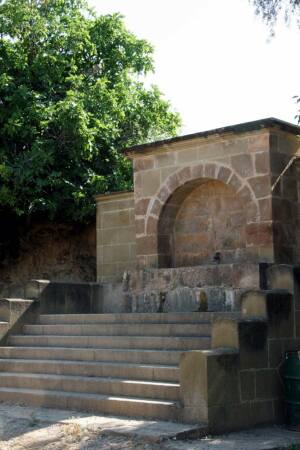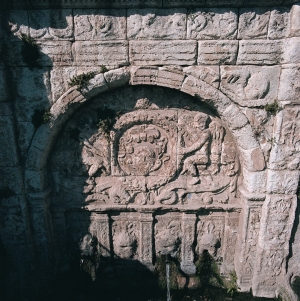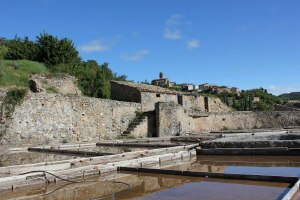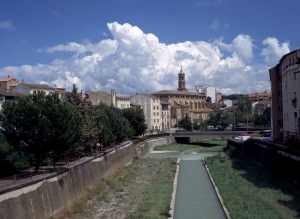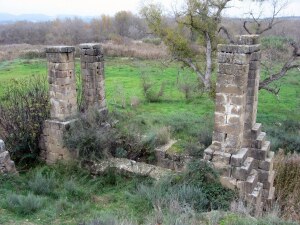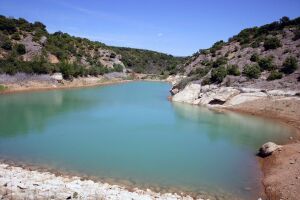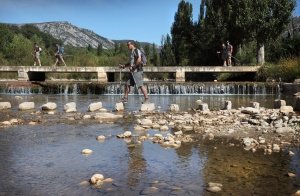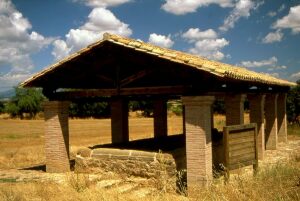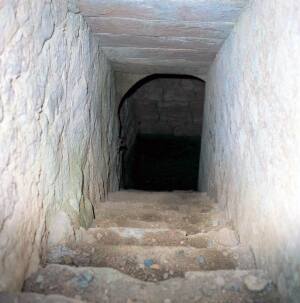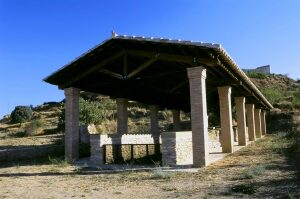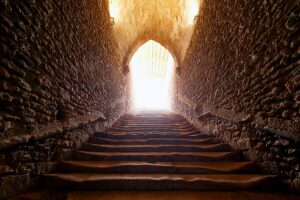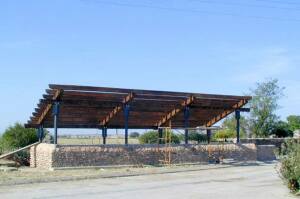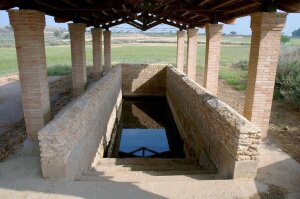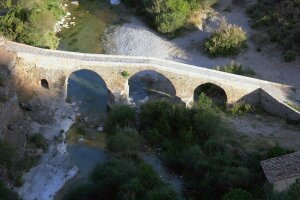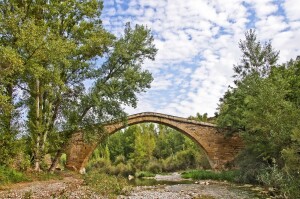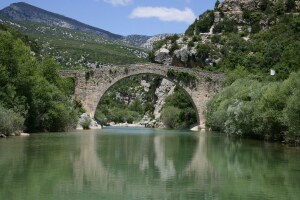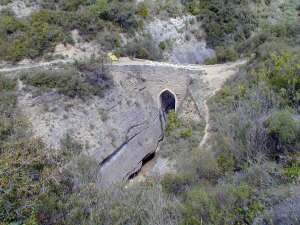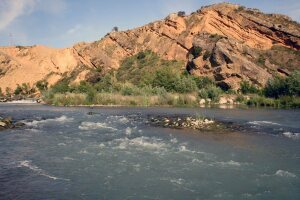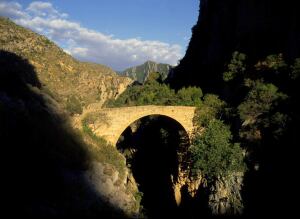The region of Somontano was inhabited during the Roman era. The municipality of Tolous was founded close to here, in the place where the Santuario de la Alegría (Shrine of Happiness) now stands in Monzón. In his book, “Geografía,” the Latin geographer, Estrabón, mentions the road that ran between IIerda (Lérida) and Osca (Huesca) which crossed the fields belonging to Castejón del Puente.
In those days, the River Cinca was known as Cinga Rapax, meaning voracious Cinca, due to the violent nature of the swollen river, which was capable of destroying bridges.
The Roman road crossed the Cinca via a bridge, whose remains (twelve pilasters and two buttresses) can still be seen close to Castejón. It was a long bridge (around 500 metres long with a total of twenty arches) and part of the structure was built away from the river bed as a precaution against floods.
The Castejón bridge was, without doubt, a key element in communication. This is reflected in the establishment of a small village in the environs of the bridge called “El Pon” derived from the Latin word for bridge.
This magnificent work was still used throughout the medieval era and well into the 16th century. Its final destruction took place during the Carlist wars in the 19th century, which consequently brought about the need for an alternative method of crossing the river. The solution was to construct a pier next to the ancient viaduct. Both it and the boatman’s house were made from ashlars taken from the ruins of the old Roman bridge.
A boat would leave the pier to transport people and goods from one side of the river to the other. It was moved with the use of a rope and pulley and also relied on the strength of the boatman. A steel towrope replaced the old rope (which was made from the fibres of a local plant known as esparto grass) a few years before new transport methods condemned the boat to memory.






